ϕ is the angle of the incline when a block of mass m just starts slipping down. The distance covered by the block if thrown up the incline with an initial speed v0 is :
v204gsinϕ
4v20gsinϕ
v20sinϕ4g
4v20sinϕg
The correct Answer is:1
To solve the problem of finding the distance covered by a block of mass m thrown up an incline with an initial speed v0, we can follow these steps:
1. Identify Forces Acting on the Block:
- The block is on an incline at an angle ϕ.
- The gravitational force acting on the block can be resolved into two components:
- Perpendicular to the incline: mgcosϕ
- Parallel to the incline (downward): mgsinϕ
- The frictional force f acts up the incline when the block is thrown upwards.
2. Determine the Condition for Motion:
- When the block just starts slipping down the incline, the frictional force f is equal to the component of gravitational force acting down the incline:
f=μmgcosϕ=mgsinϕ
- From this, we can derive the coefficient of friction:
μ=tanϕ
3. Calculate the Net Force When Thrown Up:
- When the block is thrown up with an initial speed v0, the net force acting on it is:
Fnet=−mgsinϕ−f
- Since the friction acts in the opposite direction to the motion, we can express the frictional force as:
f=μmgcosϕ=mgsinϕ
- Thus, the net force becomes:
Fnet=−mgsinϕ−mgsinϕ=−2mgsinϕ
4. Determine the Acceleration:
- Using Newton's second law, the acceleration a of the block is:
a=Fnetm=−2gsinϕ
5. Apply Kinematic Equation:
- We use the kinematic equation to find the distance s covered by the block until it comes to rest:
v2=u2+2as
- Here, v=0 (final velocity), u=v0 (initial velocity), and a=−2gsinϕ:
0=v20+2(−2gsinϕ)s
- Rearranging gives:
v20=4gsinϕ⋅s
- Solving for s:
s=v204gsinϕ
Final Answer:
The distance covered by the block when thrown up the incline with an initial speed v0 is:
s=v204gsinϕ
- The block is on an incline at an angle ϕ.
- The gravitational force acting on the block can be resolved into two components:
- Perpendicular to the incline: mgcosϕ
- Parallel to the incline (downward): mgsinϕ
- The frictional force f acts up the incline when the block is thrown upwards.
- When the block just starts slipping down the incline, the frictional force f is equal to the component of gravitational force acting down the incline:
f=μmgcosϕ=mgsinϕ
- From this, we can derive the coefficient of friction:
μ=tanϕ
- When the block is thrown up with an initial speed v0, the net force acting on it is:
Fnet=−mgsinϕ−f
- Since the friction acts in the opposite direction to the motion, we can express the frictional force as:
f=μmgcosϕ=mgsinϕ
- Thus, the net force becomes:
Fnet=−mgsinϕ−mgsinϕ=−2mgsinϕ
- Using Newton's second law, the acceleration a of the block is:
a=Fnetm=−2gsinϕ
- We use the kinematic equation to find the distance s covered by the block until it comes to rest:
v2=u2+2as
- Here, v=0 (final velocity), u=v0 (initial velocity), and a=−2gsinϕ:
0=v20+2(−2gsinϕ)s
- Rearranging gives:
v20=4gsinϕ⋅s
- Solving for s:
s=v204gsinϕ
The distance covered by the block when thrown up the incline with an initial speed v0 is:
s=v204gsinϕ
Topper's Solved these Questions
- LAWS OF MOTION BOOK - VMC MODULES ENGLISHCHAPTER - LAWS OF MOTION EXERCISE - EFFICIENT
50 Videos
- LAWS OF MOTION BOOK - VMC MODULES ENGLISHCHAPTER - LAWS OF MOTION EXERCISE - IMPECCABLE
53 Videos
- LAWS OF MOTION BOOK - VMC MODULES ENGLISHCHAPTER - LAWS OF MOTION EXERCISE - IMPECCABLE
53 Videos
- KINEMATICS OF A PARTICLE BOOK - VMC MODULES ENGLISHCHAPTER - KINEMATICS OF A PARTICLE EXERCISE - JEE Advanced (archive)
14 Videos
- LIQUIDSBOOK - VMC MODULES ENGLISHCHAPTER - LIQUIDSEXERCISE - JEE ADVANCED (LEVEL -2)
55 Videos
Similar Questions
A man wants to slide down a block of mass m which is kept on a fixed inclined plane of inclination 30∘ as shown in the figure .Initially the block is not sliding .
To just start sliding the man pushed the block down the inclined with a force F. Now , the block starts accelerating. To move it downwards with conatant speed the man starts pulling the block with same force. Surface are such that ratio of maximum static friction to kinetic friction is 2 Now, answer the following questions.
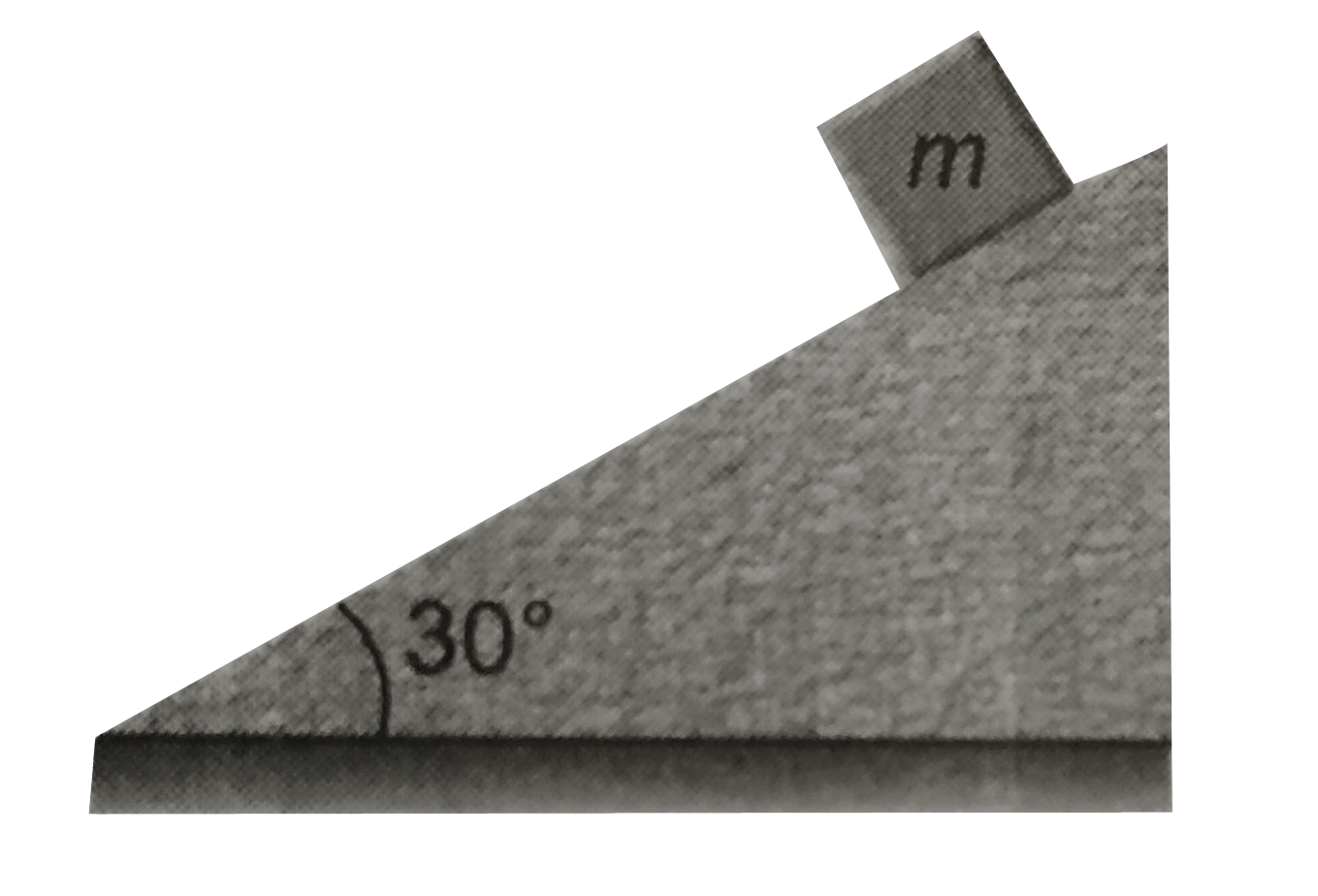
What minimum force is required to move it up the incline with constant speed?
View Solution

A man wants to slide down a block of mass m which is kept on a fixed inclined plane of inclination 30∘ as shown in figure initially, the block is not sliding. To just start sliding the man pushes the block down the inclined with a force F. Now the block starts accelerating. To move it downwards with constant speed, the man starts pulling the block with same force. Surfaces are such that ratio of maximum static friction to kinetic friction is 2. Now, answer the following questions.
If man continues pushing the block by force F, its acceleration would be
View SolutionA man wants to slide down a block of mass m which is kept on a fixed inclined plane of inclination 30∘ as shown in the figure .Initially the block is not sliding .
To just start sliding the man pushed the block down the inclined with a force F. Now , the block starts accelerating. To move it downwards with conatant speed the man starts pulling the block with same force. Surface are such that ratio of maximum static friction to kinetic friction is 2 Now, answer the following questions.

If the man continues pushing the block by force F its acceleration would be
View SolutionA man wants to slide down a block of mass m which is kept on a fixed inclined plane of inclination 30∘ as shown in the figure .Initially the block is not sliding .
To just start sliding the man pushed the block down the inclined with a force F. Now , the block starts accelerating. To move it downwards with conatant speed the man starts pulling the block with same force. Surface are such that ratio of maximum static friction to kinetic friction is 2 Now, answer the following questions.

What is the value of F?
View SolutionA man wants to slide down a block of mass m which is kept on a fixed inclined plane of inclination 30∘ as shown in the figure .Initially the block is not sliding .
To just start sliding the man pushed the block down the inclined with a force F. Now , the block starts accelerating. To move it downwards with conatant speed the man starts pulling the block with same force. Surface are such that ratio of maximum static friction to kinetic friction is 2 Now, answer the following questions.
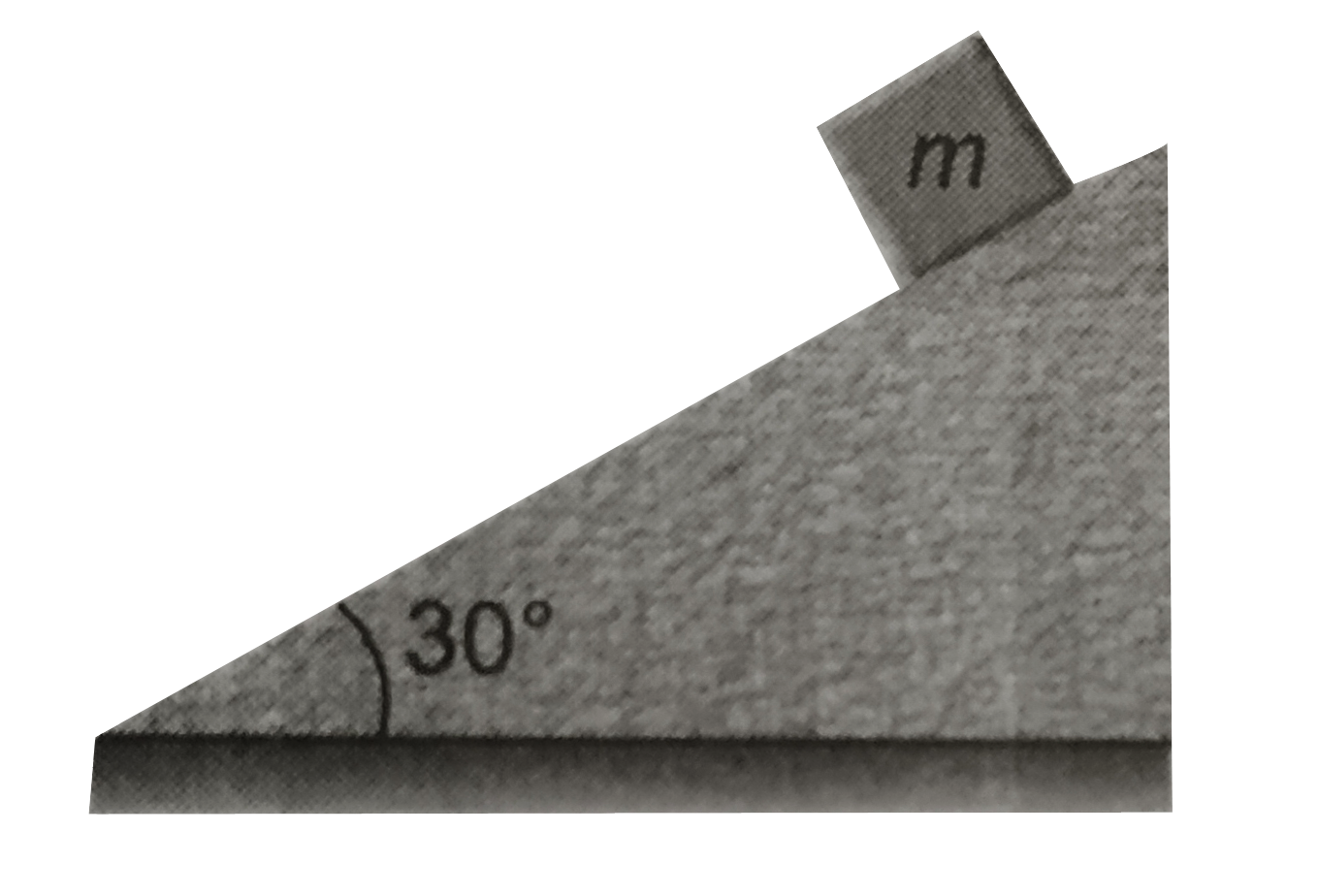
What is the value of μs, the coefficient of static friction?
View Solution
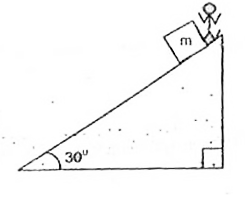
A man wants to slide down a block of mass m which is kept on a fixed inclined plane of inclination 30∘ as shown in figure initially, the block is not sliding. To just start sliding the man pushes the block down the inclined with a force F. Now the block starts accelerating. To move it downwards with constant speed, the man starts pulling the block with same force. Surfaces are such that ratio of maximum static friction to kinetic friction is 2. Now, answer the following questions.
What is the value of F?
View Solution
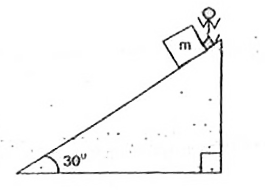
Now a man wants to slide down a block of mass m which is kept on a fixed inclined plane of inclination 30∘ as shown in figure initially, the block is not sliding. To just start sliding the man pushes the block down the inclined with a force F. Now the block starts accelerating. To move it downwards with constant speed, the man starts pulling the block with same force. Surfaces are such that ratio of maximum static friction to kinetic friction is 2. Now, answer the following questions.
What is the value of μs ?
View SolutionA man wants to slide down a block of mass m which is kept on a fixed inclined plane of inclination 30∘ as shown in the figure .Initially the block is not sliding .
To just start sliding the man pushed the block down the inclined with a force F. Now , the block starts accelerating. To move it downwards with conatant speed the man starts pulling the block with same force. Surface are such that ratio of maximum static friction to kinetic friction is 2 Now, answer the following questions.
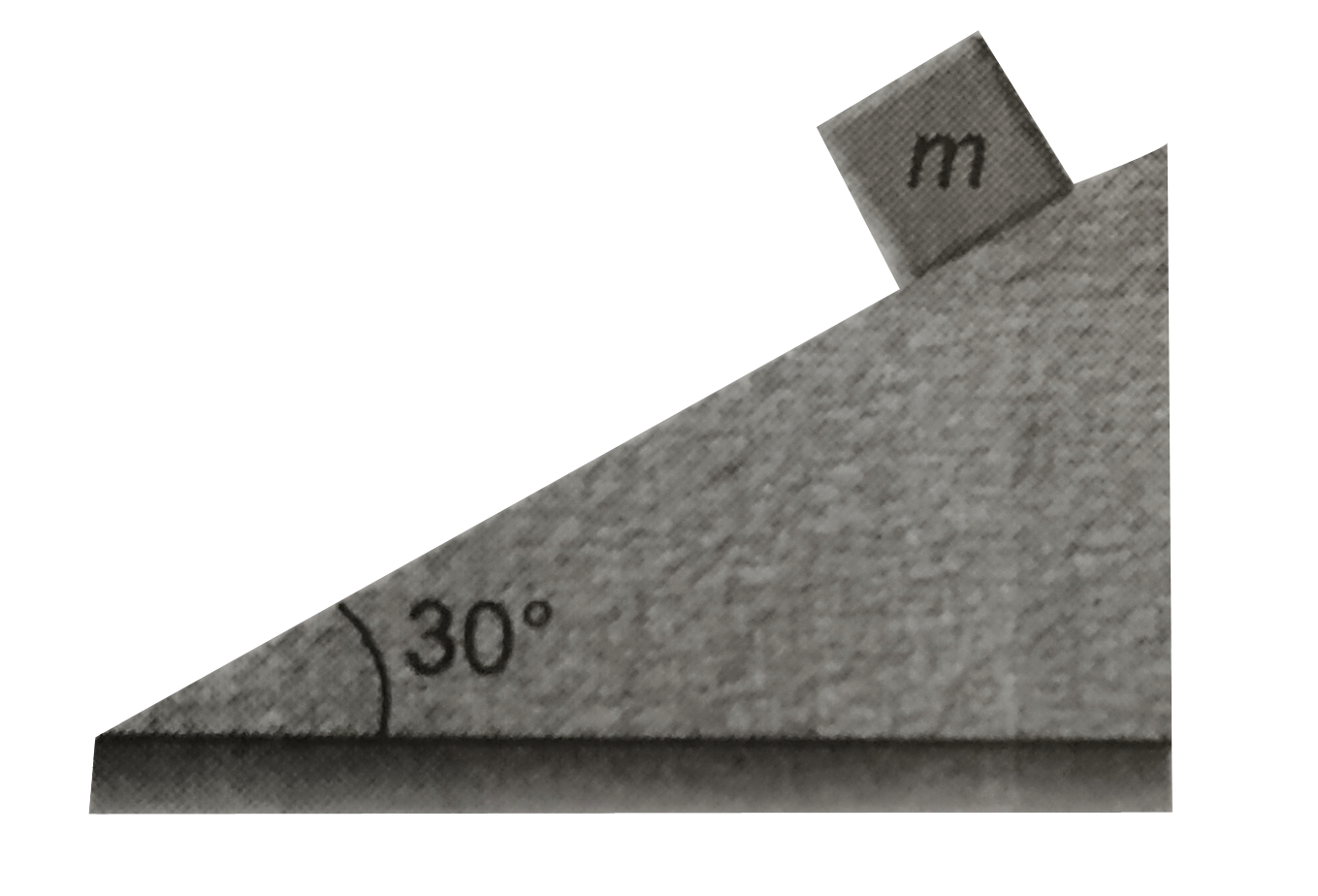
If the man wants to move the block up the inclined , what minimum force is required to start the motion?
View SolutionIf the inclination of an inclined plane is 30∘, a block of mass m kept at rest on the surface of the plane, will just slide down. If the inclination is raised to 45∘ what will be the acceleration of the body ?
View SolutionA block is at rest on an inclined plane making an angle α with the horizontal. As the angle of the incline is increased the block start slipping when the angle of inclination becomes θ then coefficient of friction is equal to
View Solution
